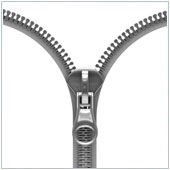 Do you remember playing in the sandbox as a child? It was usually you and your friends having a ball building sand castles or tunnels. However, should any rival group get near your toys, it was an all out turf war. It seems that this is almost exactly like the state of play with technical devices these days. Each company has their own spot in the IT sandbox and are generally unwilling to share the space with other companies. For the consumer, this means their devices don’t generally play well together.
Do you remember playing in the sandbox as a child? It was usually you and your friends having a ball building sand castles or tunnels. However, should any rival group get near your toys, it was an all out turf war. It seems that this is almost exactly like the state of play with technical devices these days. Each company has their own spot in the IT sandbox and are generally unwilling to share the space with other companies. For the consumer, this means their devices don’t generally play well together.
Here’s three things you can do to ensure your devices play well together, or at the very least talk to one another.
One file system Ever put important data onto a flash drive, gone to another office, or colleague’s computer, only to find that they use a system that doesn’t recognize the drive? This is because Windows and Mac systems utilize different file storage formats, both of which can’t be read by the other system. The solution is to format your drives as ExFat - a format that can be read by Windows, Mac and Unix. If you have blank external storage drives, or would like to format existing external drives you can follow the instructions here. Just be aware that formatting will erase all data on the drive.
For drives that have data on them, where you don’t want to format and lose all the information there are a couple of solutions. If you’ve been using the hard drive with a Mac, and it can’t be read on a Windows machine, you can use MacDrive which will make the drive readable on Windows. For a drive that’s been formatted to work on Windows, you can access it on a Mac by using a program called Tuxera NTFS for Mac.
Use the cloud for your documents If you collaborate with other colleagues in the office, or clients on a regular basis, it can be tough to work together when everyone is using different systems, or different versions of the same program. To solve this, and save a bit of money, use cloud storage providers such as Google Drive.
Drive allows you to not only store your documents online, but share them with other users and edit them in the browser of your choice. This means less downloading as everyone is using the same version of the program and users can edit in real time - no need to download documents and sort through changes. Beyond that, Drive is supported by Mac, PC, iOS and Android; you can access documents on any of these systems.
If you prefer Microsoft, you have SkyDrive which is more or less the same thing as Drive, just integrated with Microsoft Office. Apple's cloud is mainly for within the Apple system. To span across all systems, a third-party cloud provider like DropBox or Box are a great solution.
Use Google to sync calendars, email and contacts By using multiple devices, it’s a near certainty that you have contacts unique to each system that you would like to access on other systems. Regardless of the system you use, there is some way to connect it to Google’s products. You can use Google Sync to sync with Google’s Web based products which can be accessed from any browser on your desktop.
If you have a Windows machine and would like to sync your Google account information with the related Microsoft programs - like Outlook - you can use Google Apps Sync. Mac users can sync with Google easily by going to Preferences and selecting Accounts for each program.
These are just a few ways to get your devices to work well together. Do you have any other ways you get your devices to work as one? Let us know.

 “Please see attached” three words which have become synonymous with files attached to an email. Often, there is more than one file to send, or files can be large, which takes up bandwidth. Sending these files can be a real pain. To make things easier and quicker, you could compress the files into one neat little package. The question is, what program do you use to do that?
“Please see attached” three words which have become synonymous with files attached to an email. Often, there is more than one file to send, or files can be large, which takes up bandwidth. Sending these files can be a real pain. To make things easier and quicker, you could compress the files into one neat little package. The question is, what program do you use to do that?
